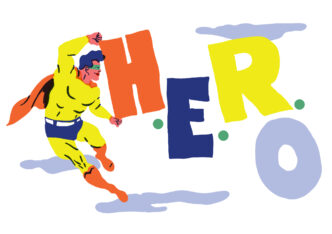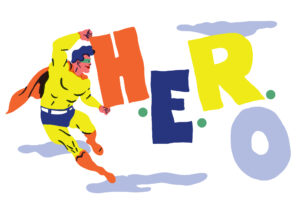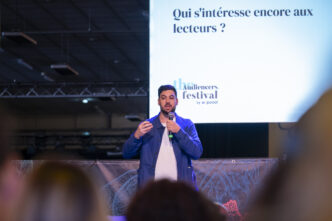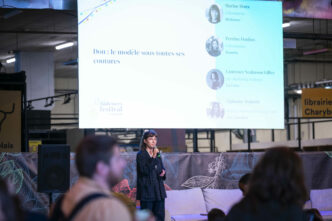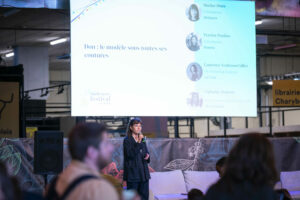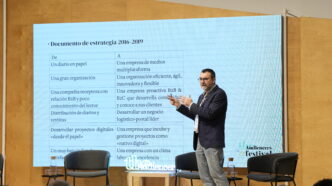
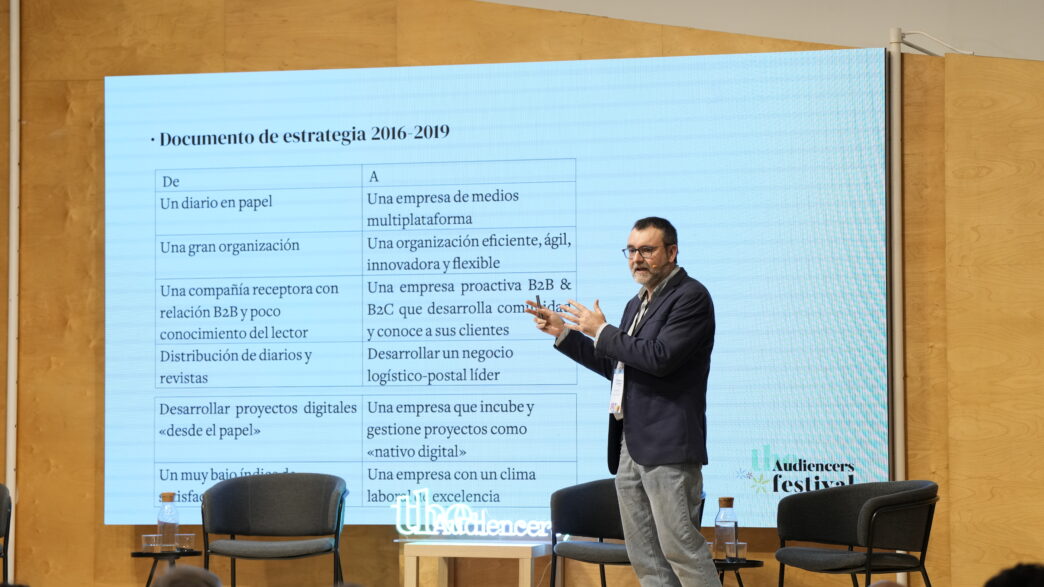
Ismael Nafria is a close, very admired friend of The Audiencers who we had the pleasure of having on stage at The Audiencers' Festival Madrid! Journalist, Writer, Consultant and Professor specialized in Digital Media, he's authored "La reinvención de The New York Times" (The reinvention of The New York Times) and “Clarín, actualizado” (Clarín, updated), among other books. He's also editor of the newsletter "Tendenci@s" (a must-read for any Spanish-speakers working in media) and coeditor of the newsletters “On the Net Today” and “Hoy en internet”. This article was originally published in Spanish on Revista de Innovación en Periodismo.
The Argentine newspaper, Clarín, is the leading Spanish-speaking media by number of subscribers, with more than 700,000 paying users and a goal of reaching one million in the coming years. Having launched their digital subscription product in April 2017, following in the footsteps of the likes of The New York Times, Clarín has undergone an incredible digital transformation process, one that I detail in-depth in my book, Clarín, actualizado (Clarín, updated) published by Galaxia Gutenberg in November 2023.
To boost digital subscriber acquisition, Clarín ‘s editorial team has worked on a very interesting journalistic concept, internally named “the decisive note.” One of the chapters of my book is dedicated to explaining what this “decisive note” consists of, designed to convince users to subscribe to the newspaper. This article is essentially based on what I say in that chapter: What are the basic characteristics of these notes or articles? What defines them? How do they affect the organization of Clarín‘s editorial team ?
Defining “decisive note”
As many other media outlets that have opted for digital subscriptions have done, the Clarín team has reflected on the reasons why a reader makes the decision to subscribe. This is explained in an internal document titled precisely “Decisive Note”, which was prepared by the newspaper’s management in collaboration with Clarín ‘s main consultant for several decades, Antoni Cases.
When asked why a user becomes a subscriber, the document explains that “there is undoubtedly a factor of adhesion to the brand”, but the subscription does not occur “without shock” – i.e. without a user finding that they can’t access certain content without paying.
This “convincing process can be long,” although “the decision is usually impulsive”, made “by wanting to access an article with differential value and a unique focus,” according to the internal document. “These articles are the decisive ones,” and without them “there are no subscribers.”
Management at Clarín worked on defining this type of content to ensure journalists are producing enough of these articles. The idea was to find an appropriate balance between free access news and “decisive notes”, which would be restricted to subscribers-only.
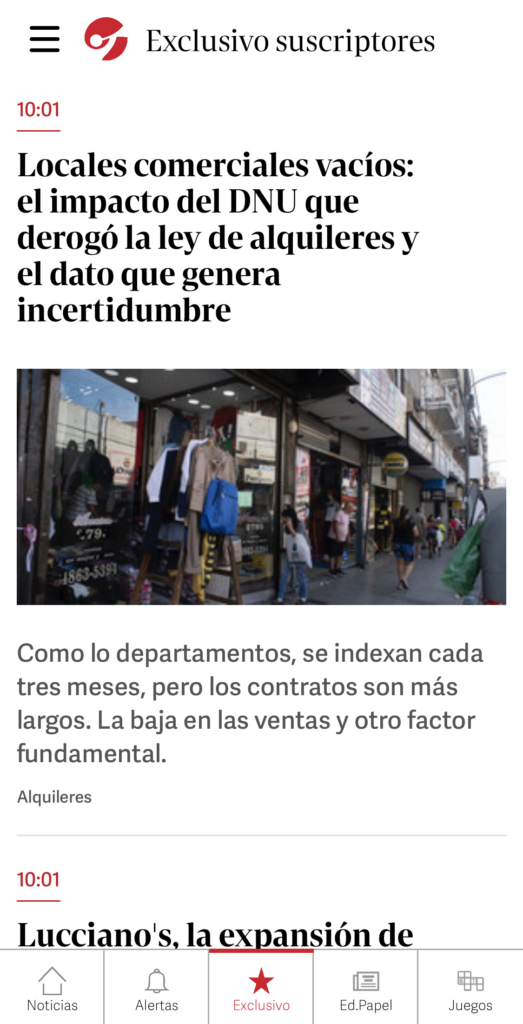
Gonzalo Abascal, editorial secretary and head of loyalty at Clarín , and one of the four heads of the newspaper’s central desk, explains that the sections that are involved in the production of “decisive notes” are, essentially, those of Politics, Economy , Society, Opinion (columnists), World, Sports and Services. These “decisive notes” articles are decided each day in editorial meetings and approved by the editor-in-chief.
Since September 2022, Clarín ‘s editorial team has been organized into four large groups. Three focus on the creation of unique content for subscribers, while the fourth aims to attract the largest possible audience. This very clear division of journalistic roles helps Clarín pursue two specific objectives: subscribers and audience.
The four areas of Clarín’s editorial team are the following:
- Politics, Economy, World and print
- Society, Sports, Shows and Zones
- Loyalty: “sections with high impact on subscribers whose contents are not linked to urgent news”
- Mass audience: includes breaking news, SEO, social networks, cover art, video and photography, among other sections
The first three, as has been noted, pursue the objective of attracting and retaining digital subscribers, so their performance indicators are linked to registrations and subscriptions, plus other “quality read” metrics, such as time spent or recirculation.
Abascal explains that, at Clarín, a note is considered to offer differential value when it generates more than five new subscribers.
What are the essential elements that make an article a possible “decisive note”?
- Exclusiveness
In the internal document on the “decisive note” it is explained that “the unique and differential character of the content is the most determining factor in the process of attracting subscribers.” When something is not exclusive, the reader could easily choose to look for on another website, one that may not block the content with a wall. Abascal points out that a good decisive note is one that the reader knows that they’ll “only find in Clarín” and one that “generates enough momentum for the reader to subscribe.” Good examples of this are the columns written by certain firms, political analyzes or Clarín ‘s exclusive political surveys .
- Quality and depth
A “decisive note” must have “quality and depth” regardless of its journalistic genre, since “conversion improves with very well-prepared, rigorous and complete works.”
- Great digital experience
Of course, the decisive notes “must meet basic SEO requirements and develop the digital narrative to the maximum”, because “works that present a better user experience achieve better results.”
- Utility for the user
Another essential concept that gives decisive character to a note is that of “immediate usefulness” for the reader. The notes in the Services section, which are practical and useful for the user, would be a good example of this. The very fact that the note provides a clear “benefit” to the user is also a defining element of an effective decisive note. Gonzalo Abascal corroborates that the journalistic genre of the piece – news, interview, report, column… – does not have a direct effect on the effectiveness of the decisive note. “What is decisive,” he says, “is whether that grade offers a utility” and complies with the conditions mentioned above.
Other issues are addressed in Clarín ‘s internal report on the decisive note, such as the convenience of distributing the publication of this content throughout the day. “The crowding in the morning” of their publication is ineffective “since they are diluted by competing with each other for the reader’s time and lower the conversion efficiency.”
For this reason, the internal discussion on the publication of the key notes is addressed in both the morning and afternoon editorial meetings, and the publication is distributed throughout the day.
Regarding the Clarín Specials, which are in-depth works on very specific topics, Abascal explains that they add quality to the site as a whole and improve the user experience, but they do not necessarily generate a large number of subscribers. In fact, according to him, they are not necessarily created as decisive notes: “All Clarín Specials have an important production behind them, but not all of them work in terms of new additions.”
> Also by Ismael: 15 essentials for a successful newsletter
Teamwork
Every Thursday, Clarín holds a meeting with all the editors and section heads of the newspaper in which, among other topics, traffic and subscription figures are reviewed and the stories that have worked best in attracting new subscribers during the year are analyzed.
Gonzalo Abascal explains that they have rankings of notes, authors and sections and this issue is experienced among the newspaper’s professionals “with a certain competitiveness in a good way.” Thus, a feeling of “pride” has been generated among journalists who publish stories that achieve good subscription results, says Abascal.
On the other hand, Clarín ‘s editorial team maintains a very close relationship with the Product team dedicated to subscriptions. “There is permanent interaction, we work together every day,” explains Abascal. «They deal with the rules of collision, with establishing the limits of what a reader who comes from Google or Facebook can read. In addition, they prepare daily and weekly reports and participate in the analysis of those reports, but all the work is done in close collaboration. “It is a topic that we in the editorial office follow very closely,” concludes Abascal.
Nine common keys to the decisive note
An internal study carried out by Clarín based on the 600 articles that generated the most subscribers between May 2021 and May 2022 made it possible to identify nine dominant characteristics in the decisive notes. In an internal report carried out after the study, these nine keys were discussed:
- They are exclusive or seem so: The reader “perceives that they are accessing content that they will not find elsewhere for free, or at least not with the quality and rigor of Clarín.”
- They are authored by someone: In the study, 97% of the decisive notes were signed.
- Linked to current events: “With a few exceptions (such as some historical topics, where there seems to be a segmented audience), the decisive notes are linked to a specific informative moment.”
- The title is decisive: “It must convey – the study says – the added value of Clarín and the tension or concern that activates the reader’s emotionality to buy the subscription.”
- The focus: The Clarín team considers that “the reduction that we can contribute to the note is key, especially in the Home page, which is where most conversions originate.”
- Length: “We suggest notes of more than 1000 words. 88% of the decisive notes studied exceeded that length. However, a longer note does not ensure its effectiveness if it does not meet the previous conditions. The highest percentage of success was found in notes between 1,000 and 1,500 words.
- Topics: “Politics (especially in times of conflict) and issues that directly affect people’s lives (Health, Pockets, Opportunities…) are the most successful.”
- Types of notes: “Opinion columns, Exclusives, Reports that show added value from the title (Surveys), Service columns and Stories (which can be linked to the police, but not only), are the most effective ».
- Depth and usefulness: “What is important sells more than what is merely interesting. Information and interpretation more than disclosure. The anecdotal or curious can entertain, but it is more difficult to drive the purchase.
> To add to your reading list: Implementing User Needs Is Cultural Change
Clarín home management
The home or digital cover of Clarín “is the gateway for subscribers and those prone to subscription,” as stated in an internal document created by Clarín to prepare the latest reorganization of its journalistic team, carried out in September 2022. For this reason, “the edition will be carried out under the prism of the interest of this group of readers.” What does this mean in practice? That the team must “privilege its own content with a singular focus, even in urgent news. The decisive notes must have a continuous and important presence in the first scrolls.”
An internal analysis carried out by Clarín indicates that “of the 500,000 daily visitors to the homepage, those who enter more than three times a day do not reach 5% of the daily average. And more than 40% only visit home once a day.” This is the reason why “we must be very careful – say those responsible for the newspaper – in maintaining our decisive notes in privileged positions to be able to show them to the 95% of users who visit us between 1 and 3 times a day.”





